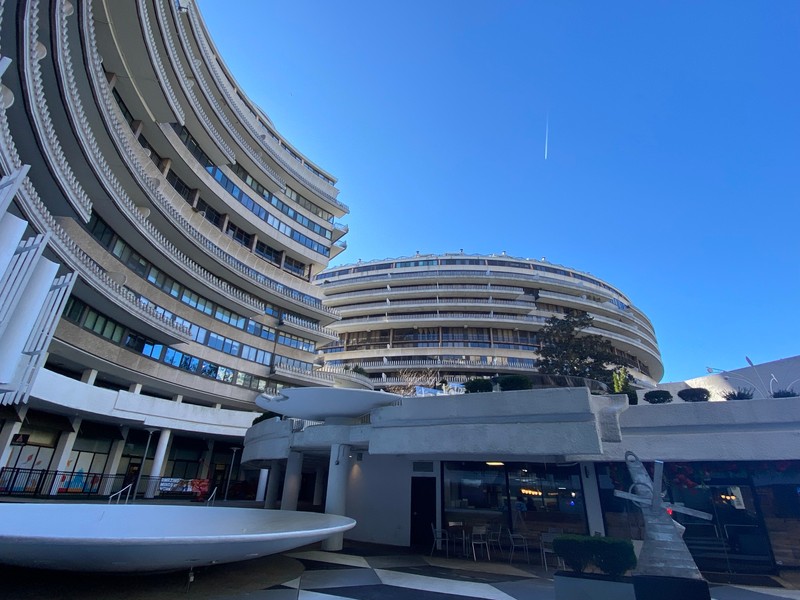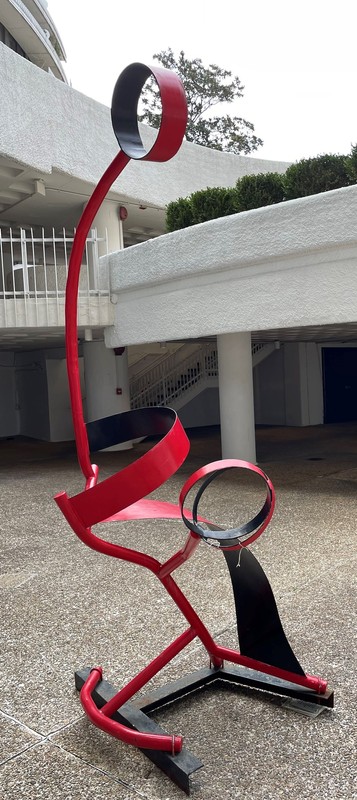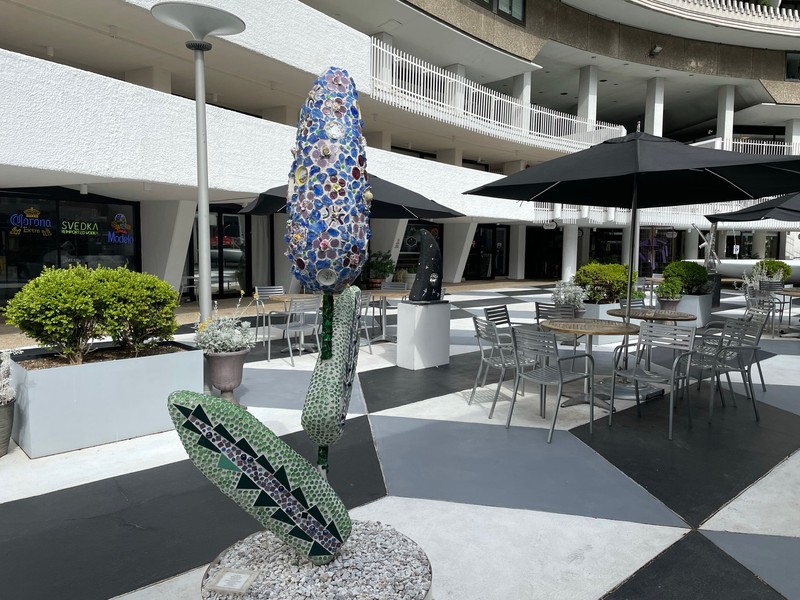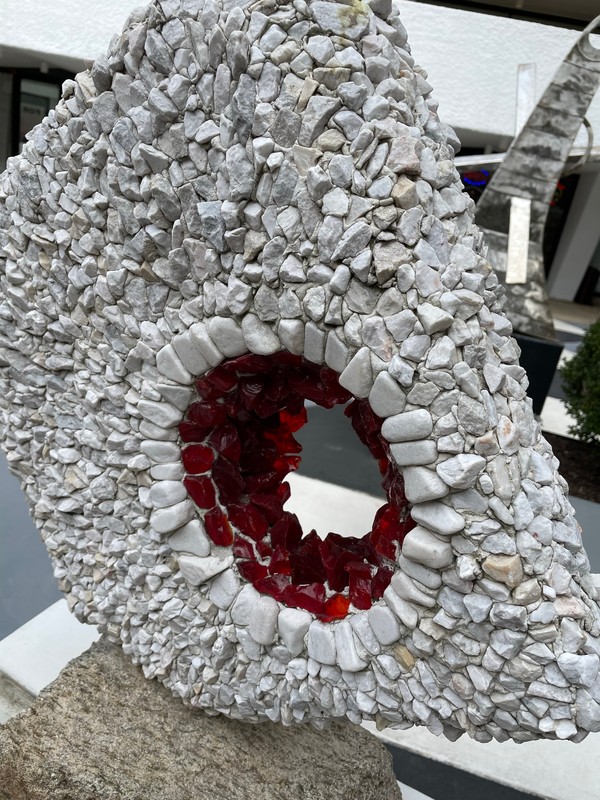Sculptures at the Watergate
Introduction
Text-to-speech Audio
Walking out of the Historic District, you can continue to appreciate area art by heading to the Watergate Complex. At the corner of 25th and H Streets, cross Virginia Avenue to the Watergate lower level. In the courtyard area you'll see a variety of sculptures and artwork. Dale Johnson, owner of Watergate Gallery and Frame Design, supports a diverse group of artists by exhibiting their work in the open space. The sculptures change, but there are always several pieces on display.
By now, you might want to take a break from all you have seen. You can stop at one of the places in the lower courtyard or head back to street level and try Tazza Cafe on New Hampshire Avenue across from the side steps of the Kennedy Center. Or head back to Circa, Tonic/Quigley, GW Deli, or any of the restaurants in the Foggy Bottom/GWU area.
As you walked through the Historic District and it peaked your curiosity about he narrow modest row houses and neighborhood history, try our "Foggy Bottom Historic District Walking Tour" (see link below). Use your phone, tablet, or desktop to visit the 19 stops and learn about the Historic District's people, lifestyles, history, art, and architecture. The tour tracks the neighborhood’s transition from working class in the 1870s to its current status. Each stop features a summary, descriptive details, images from past to present, and sources for additional information.
Thank you so much for selecting this walking tour. Our Foggy Bottom Historic District Walking tours show that this once industrial neighborhood, which was saved from destruction, now has much to offer. We hope you will return often to walk the tree-lined streets as they change with the seasons.
Images
Curved residences of Watergate viewed from the lower courtyard and sculpture garden area

Vibrant red and Black metal sculpture, "Beyond the Known," by Richard Binder

Mixed media mosaic cactus sculpture "Garden Sentinal" by Jane Pettit brightens the eating area in Watergate lower level

The ruby-colored center of "Sunrise, Sunset" by Jane Pettit

Dayla Luttwak, "Scandal II," Watergate
.jpg)
Backstory and Context
Text-to-speech Audio
Watergate Gallery & Frame Design started out as a picture framing business 1986. The current owner, Dale Johnson, worked at the shop after graduating from American University with a degree in Art History. After several years, she bought the business and features picture framing and placing and exhibitions and sales of professional artwork. She is always willing to share her knowledge of the artists and their work. Johnson is also part of the team of artistic advisors for the community's Arts in Foggy Bottom Biennial Exhibition.
The Watergate complex is a group of six residential and commercial buildings in Foggy Bottom and covers a total of 10 acres. Built between 1963 and 1971, it was designed by Italian architect Luigi Moretti. For more than a century, the land now occupied by the Watergate complex belonged to the gas works of the Washington Gas Light Company, which produced "manufactured gas" for heating, cooking, and lighting throughout the city. The demolition of the gas works 1947 eliminated the smoke and odors and triggered the revitalization and renovation of the area's row and alley houses .
Sources
Personal Communications with Dale Johnson, Watergate Gallery & Frame
Joseph Rodota, The Architecture of Washington DC's Watergate Complex: Inside America’s Most Infamous Address, Arch Daily, (Mar. 1, 2018) (see link below)
Leone/Vogt, 2021
Vogt/Leone, 2022
Vogt/Leone, 2021
Vogt/Leone, 2022
Leone/Vogt, 2022
